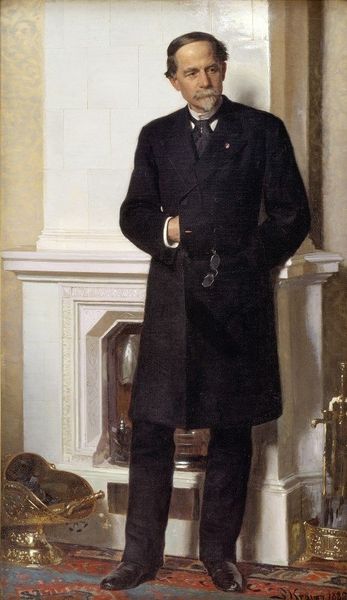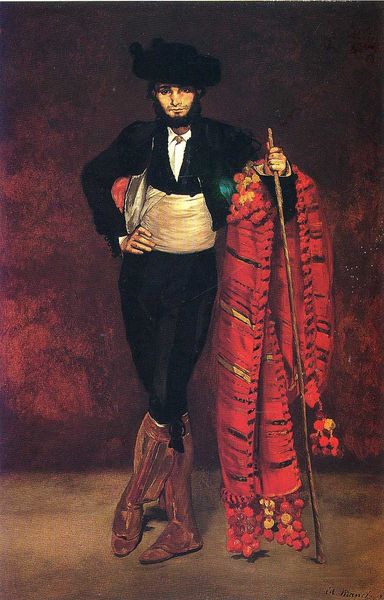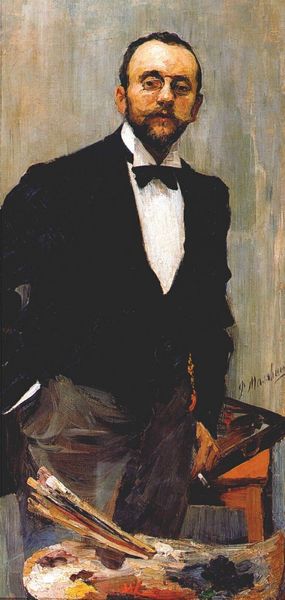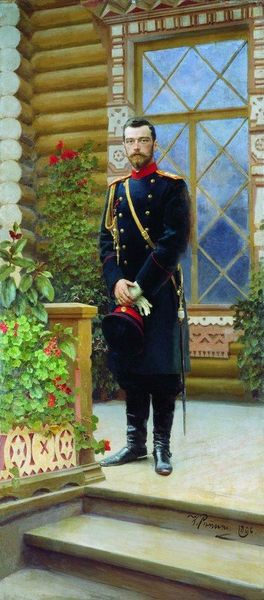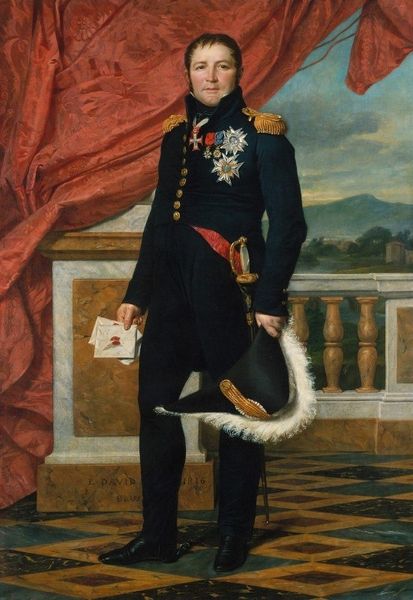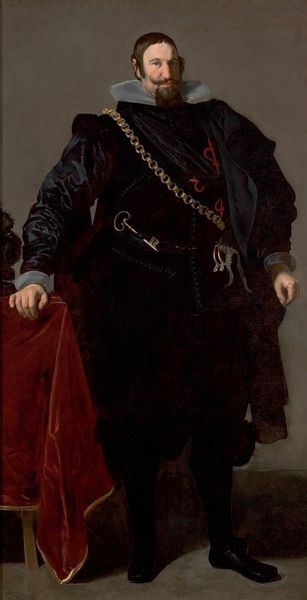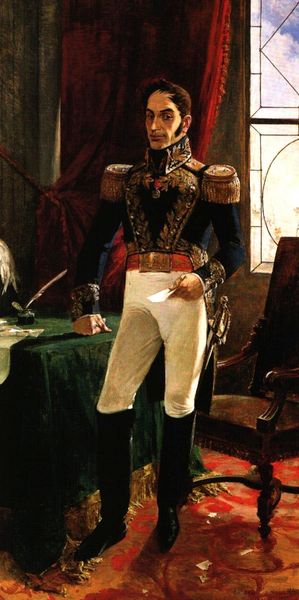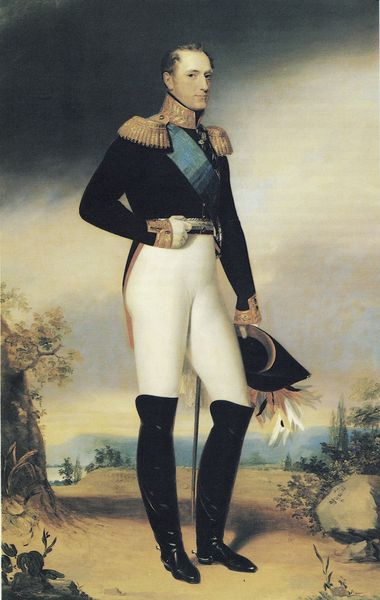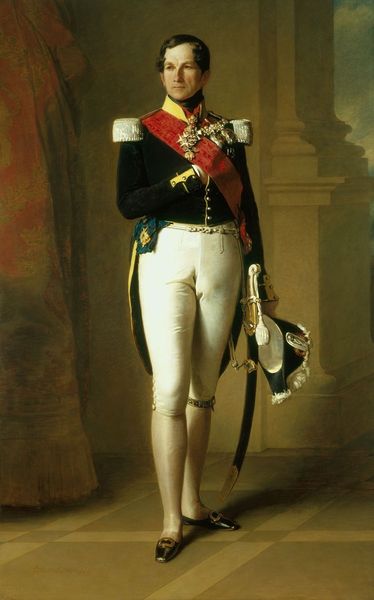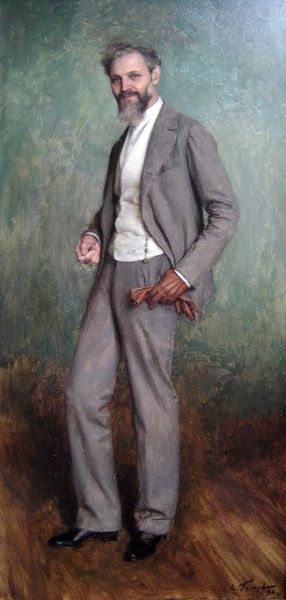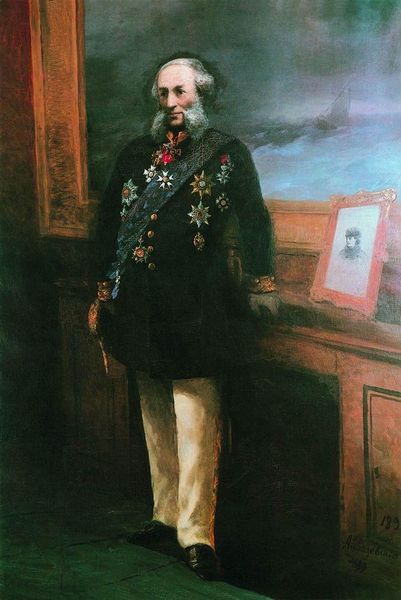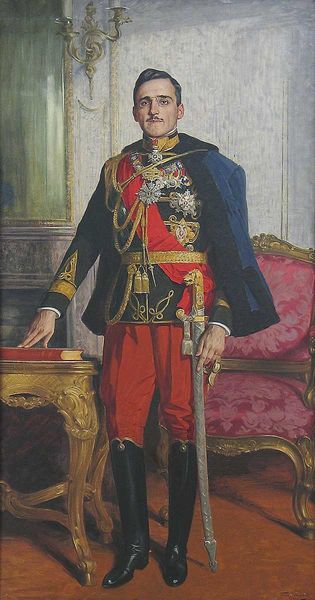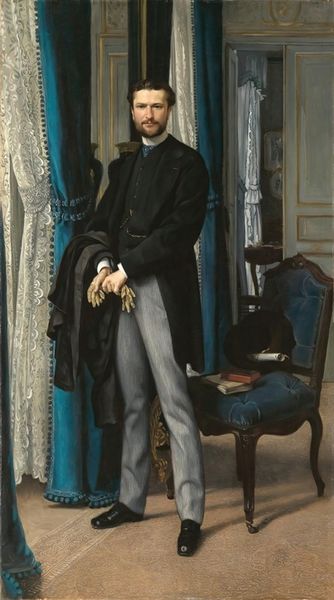
Copyright: Public domain
Editor: This is Anders Zorn's "Gustav V," painted in 1909, using oil on canvas. There’s a formality to the painting that almost feels staged, but the brushwork seems quite loose, somehow capturing a candid essence. What's your take on it? Curator: What I see is a calculated performance of power meticulously constructed through materiality. Look at the oil paint itself – the way Zorn uses it to render the textures of the suit versus the skin, it speaks to a studied approach about the creation of social standing. Editor: So, it's less about Gustav himself, and more about the materials constructing his image? Curator: Precisely! Consider the societal pressures to display wealth and status in early 20th-century Sweden. Oil paint, traditionally associated with the elite, becomes a tool for constructing and reinforcing the idea of royalty. The very act of commissioning a portrait is itself an economic statement. Do you notice any other instances in which the choice of medium influences the representation? Editor: Well, the medals seem strategically placed. Almost like they're not just symbols but physical commodities showcased through the medium. Curator: Exactly! The materiality shouts as much as the image itself. This leads to questions regarding consumerism and the purpose of royal image, and opens debate about production methods in fine art, and if there is truly separation between fine and functional arts. Editor: This perspective really makes you reconsider what’s being “said” by something like an oil painting. I never considered that the production of materials influenced how people perceived artworks! Curator: By understanding process, material and social circumstances, the art starts a different discourse and transforms into a dynamic form.
Comments
No comments
Be the first to comment and join the conversation on the ultimate creative platform.
